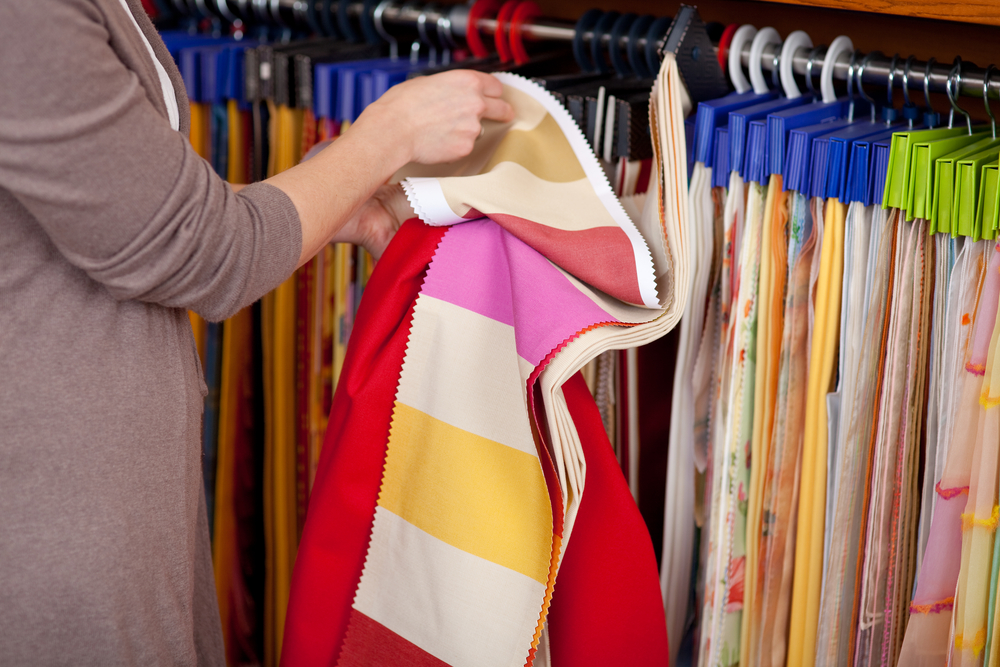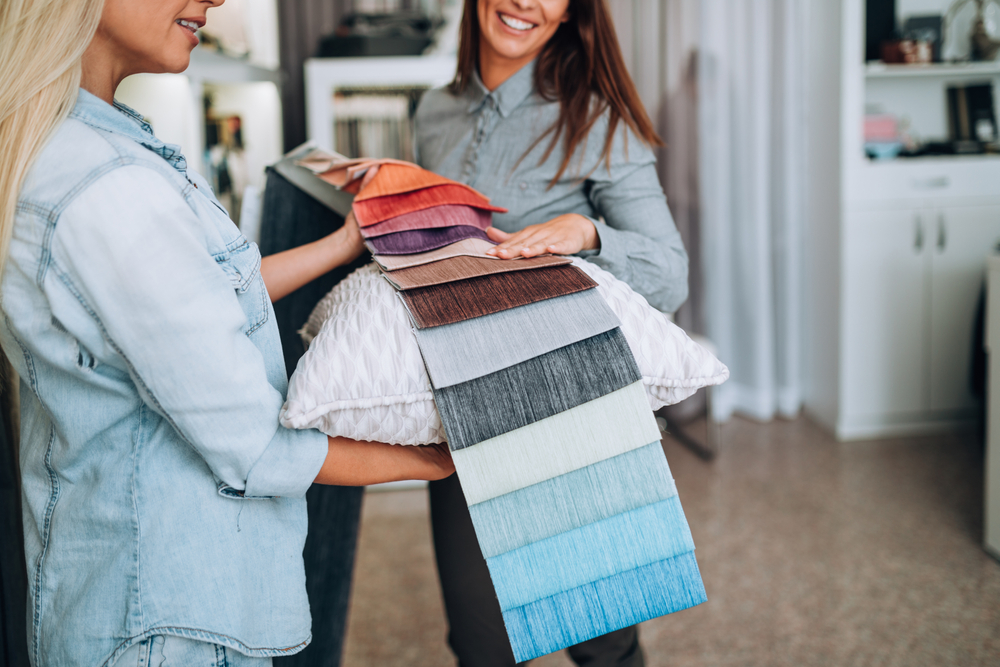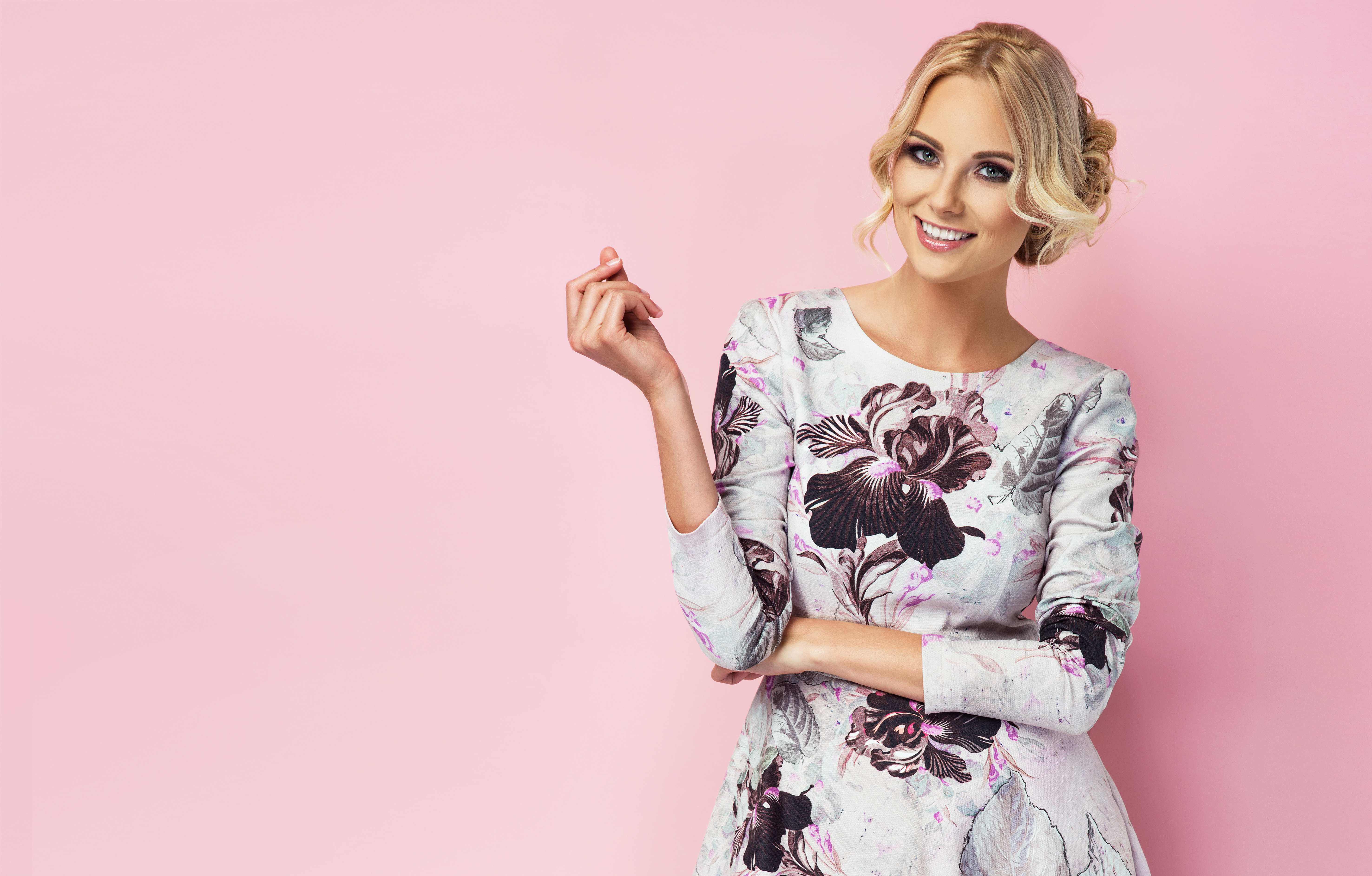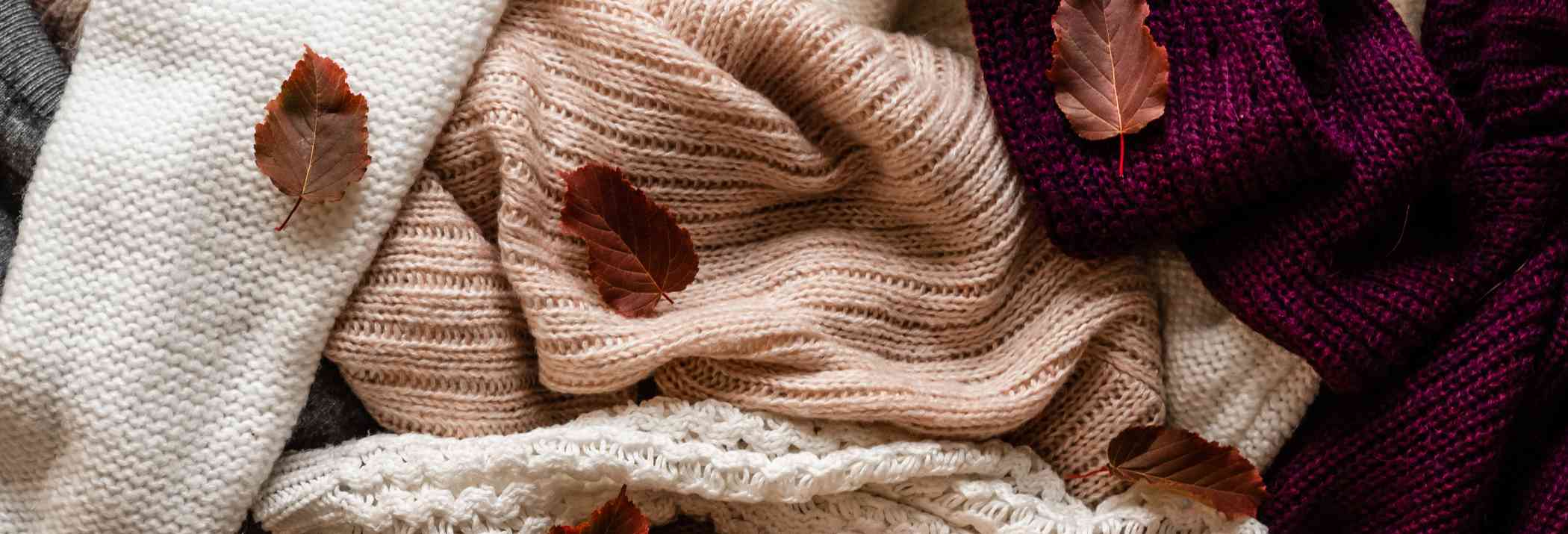How to Source Designer Upholstery Fabric from Fashinza?



If you are a brand looking to source some classic designer upholstery fabric, then you have reached the right place. With this step by step guide, designers will not only get to know how to choose the kind of upholstery fabric but also the entire process of sourcing and buying it from Fashinza. Before all that, let us know how to choose the fabric of one’s dreams!
Things to do before sourcing designer upholstery fabric:
- Knowing what to make: Designers should first attempt to ponder upon their choices and then decide what kind of fabric they want to invest in. if they are a startup and have little to no experience in this field, then they have to look into the market trends, the competitor’s designs and the season needs and then move forward with their choices.
- Finding one’s niche: The second thing that designers must do is figure out what their speciality is. Is it intended for a kitchen, bedroom, a company’s office or an event? women, males, or something in between? Is it going to be formal or party design or a combination of the two? Finding a niche is similar to giving your company's vision a direction.
- Finding investors: The business will be of no use if there are not ample investors in it. If the company is looking forward to sourcing designer upholstery fabric then it is important they have ample investors at teh click of their hand. Designing upholstery for high-end companies and investors will be worth it in the end.
- Do some research into the marketing trends: To carve out a place in the designer upholstery sector, it's critical to understand the intricacies of current trends and working styles. Designers can achieve their goals by using a systematic research strategy. For example, a company that wants to make sustainable upholstery should be aware of the production regulations and norms. Aside from that, it should be familiar with the market's major participants and assess their manufacturing and sourcing procedures.
How to search for the best designer upholstery fabric?

- Counter sourcing is the key to success:
Counter sourcing is a terrific approach to guarantee the designers acquire the exact materials they need without having to dig into all the technical specifics and industry lingo if they're new to product creation. Those who are more experienced or have a degree in textiles, sometimes know exactly what they want. But it is difficult for a start-up wonder to know what are the exact materials that they need. So, counter sourcing is the key!
- Do you like what you see? Buy it!:
People might just tell the designers otherwise, but the more they trust their instincts, the better it is. If the designers like a piece of fabric and its texture, they should go ahead and buy it! New designers should go to their favourite store, even if it is their competition and see what they are sourcing and from where. In this way, they will not only know what to buy but also how to proceed with their designs. But, of course, they need to make sure that they don't end up buying too much otherwise they might just face a loss.
- Ask for help!:
Whenever one is starting a business, they do need help. They should not be embarrassed to ask for help from people. Experienced designers may guide them and they may know what exactly they are trying to make. Choosing fabric for furniture might get tricky, therefore it is not a big deal if they ask for some help from experienced people.
- Testing the products:
Designers who are looking forward to creating a business in upholstery should also test out the end products themselves. Once the fabric is sourced, they should create what they are wanting to create and test the product out in their own homes. For example, if they have created a sofa set cover, the first thing they should do is to put it on in their own house and then decade eto stock it up at their store. After using it for a while they will know whether it is comfortable, durable and easy to use or not.
What are the different types of fabric manufacturers?
There are different kinds of fabric manufacturers let us look into each of them.
- A fabric mill:
Fabric mills are places that provide you with a variety. Fabric mills are textile production facilities. They manufacture and process a variety of textiles. Fabric mills have the advantage of providing custom-made textiles and meeting minimum order requirements. Designers must, however, ensure that all terms and conditions are discussed in order to guarantee a smooth production process.
- A converter:
Fabric from converters can be purchased by upholstery companies searching for new sourcing choices. These are the businesses that buy unfinished textiles directly from the maker. They then dye and print the fabric before selling it to upholstery companies. These can be a great source of fabrics because they usually have a lot of variety to offer and it is cheaper.
- A jobber:
As funny as the name might sound, these people create their stock from the left out materials from the mills and converters. They take those materials and turn them into something durable thereby supporting sustainable manufacturing of fabrics.
- FPP( Full Package Production):
An FPP supplier can assist designers with their new apparel line's large upholstery production. FPP may also provide them with bespoke fabrics and trimmings. It's a one-stop-shop that can assist designers at every stage of the textile manufacturing process.
How to choose designer upholstery fabrics online?

Designers might just think that it is impossible to choose fabrics for upholstery online, but we are here to break that myth. They will not only get a lot of options but also a way to compare it to offline sources as well. Let us look into a guide:
- Start by analysing the online stores:
We get it, fabric sourcing is not an easy task, but if designers really want to succeed with their endeavours, they need to start by analysing the online platforms. Designers who wish to buy fabric online should first research these sites and choose the most trustworthy one. They must, however, choose an online platform that offers high-quality fabrics and trimmings at competitive prices.
- Minimum order requirement:
If designers are looking forward to buying from an online store, then they should look into their minimum order requirement criteria. It is possible that they might have certain criteria to order only in bulk quantity from them, but this might lead to a loss as designers can end up not liking the material. So, before proceeding, it is important to crosscheck their minimum order requirements.
- Search for sample products:
Before going ahead and placing an order, it is important to search for samples. Designers should ask for samples from the fabric providers to avoid any confusion in the future. Designers may also view product specifications for specific materials on the internet. Sample upholstery can also be made by designers to test durability and sustainability. They can also contact the customer service department for further information. It will assist them in selecting the appropriate fabric quality for the appropriate upholstery.
- Research about the origin of the designer fabric:
Unfortunately, while selecting materials online, many designers overlook this element. It is, nevertheless, critical to inquire about the provenance of the fabric they intend to purchase online. Should designers use textiles made in the United States or those made in other countries? Experts advise choosing fabrics made in the United States. It will be cost-effective and of high quality. Fabrics made in other countries are more costly and come with a larger premium. So, the original mattress may significantly lead to a rise in the price of the fabric.
- Compare prices:
Designers should not act in haste and place an order for materials that they see online. They should always compare prices with other online platforms and then only go ahead and place orders. It's not a good idea to go over budget on your first purchase. As a result, they must choose a fabric that both warrants the price and maybe approached in the future. Designers might save money by waiting for season-end reductions and discounts.
Conclusion:
Hopefully, this guide to sourcing designer upholstery fabric will help designers to choose better and make better products. They should take into consideration the budget, the quality as well as the origin of the fabric into consideration. Apart from that, all brands and designers should look into Fashion, a platform for B2B clothing manufacturing. They link garment manufacturers with vendors to help them produce their collections. Their partner brands simply need to place the order; they handle the full production process from design to delivery. Their main service is a platform that allows companies to place orders, track them, get daily production updates, contact producers, and pay for them. Their platform allows businesses to place production orders for their collections and have them delivered, with the ability to track, interact, and pay for them along the route. For brands, they make the garment production process simple, quick, and transparent.
How to source designer upholstery fabric from Fashinza?
If you are a brand looking to source some classic designer upholstery fabric, then you have reached the right place. With this step by step guide, designers will not only get to know how to choose the kind of upholstery fabric but also the entire process of sourcing and buying it from Fashinza. Before all that, let us know how to choose the fabric of one's dreams!
Things to do before sourcing designer upholstery fabric:
- Knowing what to make: Designers should first attempt to ponder upon their choices and then decide what kind of fabric they want to invest in. if they are a startup and have little to no experience in this field, then they have to look into the market trends, the competitor's designs and the season needs and then move forward with their choices.
- Finding one's niche: The second thing that designers must do is figure out what their speciality is. Is it intended for a kitchen, bedroom, a company's office or an event? Women, males, or something in between? Is it going to be formal or party design or a combination of the two? Finding a niche is similar to giving your company's vision a direction.
- Finding investors: The business will be of no use if there are not ample investors in it. If the company is looking forward to sourcing designer upholstery fabric, then it is important they have ample investors at the click of their hand. Designing upholstery for high-end companies and investors will be worth it in the end.
- Do some research into the marketing trends: To carve out a place in the designer upholstery sector, it's critical to understand the intricacies of current trends and working styles. Designers can achieve their goals by using a systematic research strategy. For example, a company that wants to make sustainable upholstery should be aware of the production regulations and norms. Aside from that, it should be familiar with the market's major participants and assess their manufacturing and sourcing procedures.
How to search for the best designer upholstery fabric?
- Counter sourcing is the key to success:
Counter sourcing is a terrific approach to guarantee the designers acquire the exact materials they need without having to dig into all the technical specifics and industry lingo if they're new to product creation. Those who are more experienced or have a degree in textiles, sometimes know exactly what they want. But it is difficult for a startup wonder to know what are the exact materials that they need. So, counter sourcing is the key!
- Do you like what you see? Buy it!:
People might just tell the designers otherwise, but the more they trust their instincts, the better it is. If the designers like a piece of fabric and its texture, they should go ahead and buy it! New designers should go to their favourite store, even if it is their competition and see what they are sourcing and from where. In this way, they will not only know what to buy but also how to proceed with their designs. But, of course, they need to make sure that they don't end up buying too much. Otherwise, they might just face a loss.
- Ask for help!:
Whenever one is starting a business, they do need help. They should not be embarrassed to ask for help from people. Experienced designers may guide them, and they may know what exactly they are trying to make. Choosing fabric for furniture might get tricky. Therefore, it is not a big deal if they ask for some help from experienced people.
- Testing the products:
Designers who are looking forward to creating a business in upholstery should also test out the end products themselves. Once the fabric is sourced, they should create what they want to create and test the product out in their own homes. For example, if they have created a sofa set cover, the first thing they should do is to put it on in their own house and then decide to stock it up at their store. After using it for a while, they will know whether it is comfortable, durable and easy to use or not.
What are the different types of fabric manufacturers?
There are different kinds of fabric manufacturers. Let us look into each of them.
- A fabric mill:
Fabric mills are places that provide you with a variety. Fabric mills are textile production facilities. They manufacture and process a variety of textiles. Fabric mills have the advantage of providing custom-made textiles and meeting minimum order requirements. Designers must, however, ensure that all terms and conditions are discussed in order to guarantee a smooth production process.
- A converter:
Fabric from converters can be purchased by upholstery companies searching for new sourcing choices. These are the businesses that buy unfinished textiles directly from the maker. They then dye and print the fabric before selling it to upholstery companies. These can be a great source of fabrics because they usually have a lot of variety to offer, and it is cheaper.
- A jobber:
As funny as the name might sound, these people create their stock from the left out materials from the mills and converters. They take those materials and turn them into something durable, thereby supporting the sustainable manufacturing of fabrics.
- FPP( Full Package Production):
An FPP supplier can assist designers with their new apparel line's large upholstery production. FPP may also provide them with bespoke fabrics and trimmings. It's a one-stop shop that can assist designers at every stage of the textile manufacturing process.
How to choose designer upholstery fabrics online?
Designers might just think that it is impossible to choose fabrics for upholstery online, but we are here to break that myth. They will not only get a lot of options, but also a way to compare it to offline sources as well. Let us look into a guide:
- Start by analysing the online stores:
We get it, fabric sourcing is not an easy task, but if designers really want to succeed with their endeavours, they need to start by analysing the online platforms. Designers who wish to buy fabric online should first research these sites and choose the most trustworthy one. They must, however, choose an online platform that offers high-quality fabrics and trimmings at competitive prices.
- Minimum order requirement:
If designers are looking forward to buying from an online store, then they should look into their minimum order requirement criteria. It is possible that they might have certain criteria to order only in bulk quantity from them, but this might lead to a loss as designers can end up not liking the material. So, before proceeding, it is important to crosscheck their minimum order requirements.
- Search for sample products:
Before going ahead and placing an order, it is important to search for samples. Designers should ask for samples from the fabric providers to avoid any confusion in the future. Designers may also view product specifications for specific materials on the internet. Sample upholstery can also be made by designers to test durability and sustainability. They can also contact the customer service department for further information. It will assist them in selecting the appropriate fabric quality for the appropriate upholstery.
- Research about the origin of the designer fabric:
Unfortunately, while selecting materials online, many designers overlook this element. It is, nevertheless, critical to inquire about the provenance of the fabric they intend to purchase online. Should designers use textiles made in the United States or those made in other countries? Experts advise choosing fabrics made in the United States. It will be cost-effective and of high quality. Fabrics made in other countries are more costly and come with a larger premium. So, the original mattress may significantly lead to a rise in the price of the fabric.
- Compare prices:
Designers should not act in haste and place an order for materials that they see online. They should always compare prices with other online platforms and then only go ahead and place orders. It's not a good idea to go over budget on your first purchase. As a result, they must choose a fabric that both warrants the price and may be approached in the future. Designers might save money by waiting for season-end reductions and discounts.
Conclusion:
Hopefully, this guide to sourcing designer upholstery fabric will help designers choose better and make better products. They should take into consideration the budget, the quality as well as the origin of the fabric into consideration. Apart from that, all brands and designers should look into Fashion, a platform for B2B clothing manufacturing. They link garment manufacturers with vendors to help them produce their collections. Their partner brands simply need to place the order; they handle the full production process from design to delivery. Their main service is a platform that allows companies to place orders, track them, get daily production updates, contact producers, and pay for them. Their platform allows businesses to place production orders for their collections and have them delivered, with the ability to track, interact, and pay for them along the route. For brands, they make the garment production process simple, quick, and transparent.



















